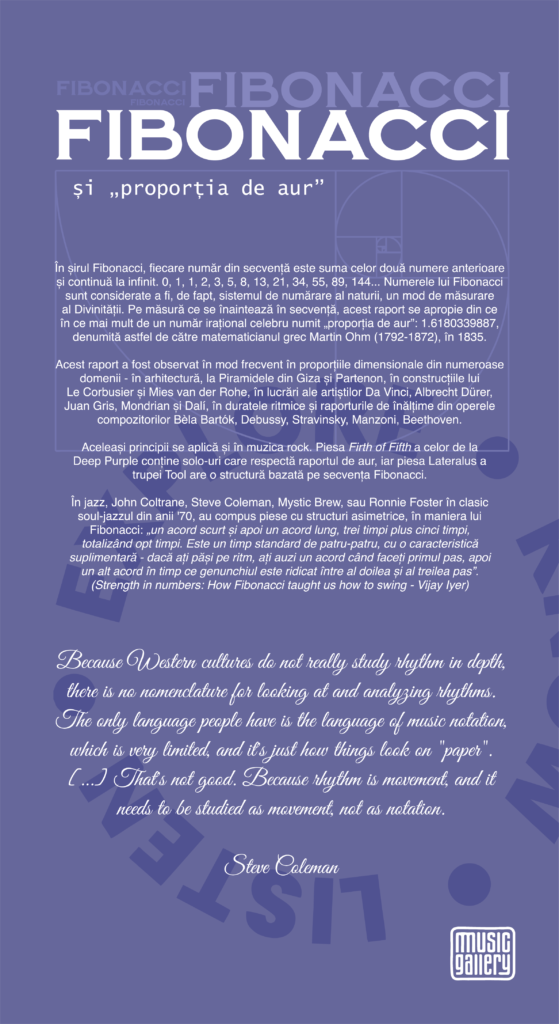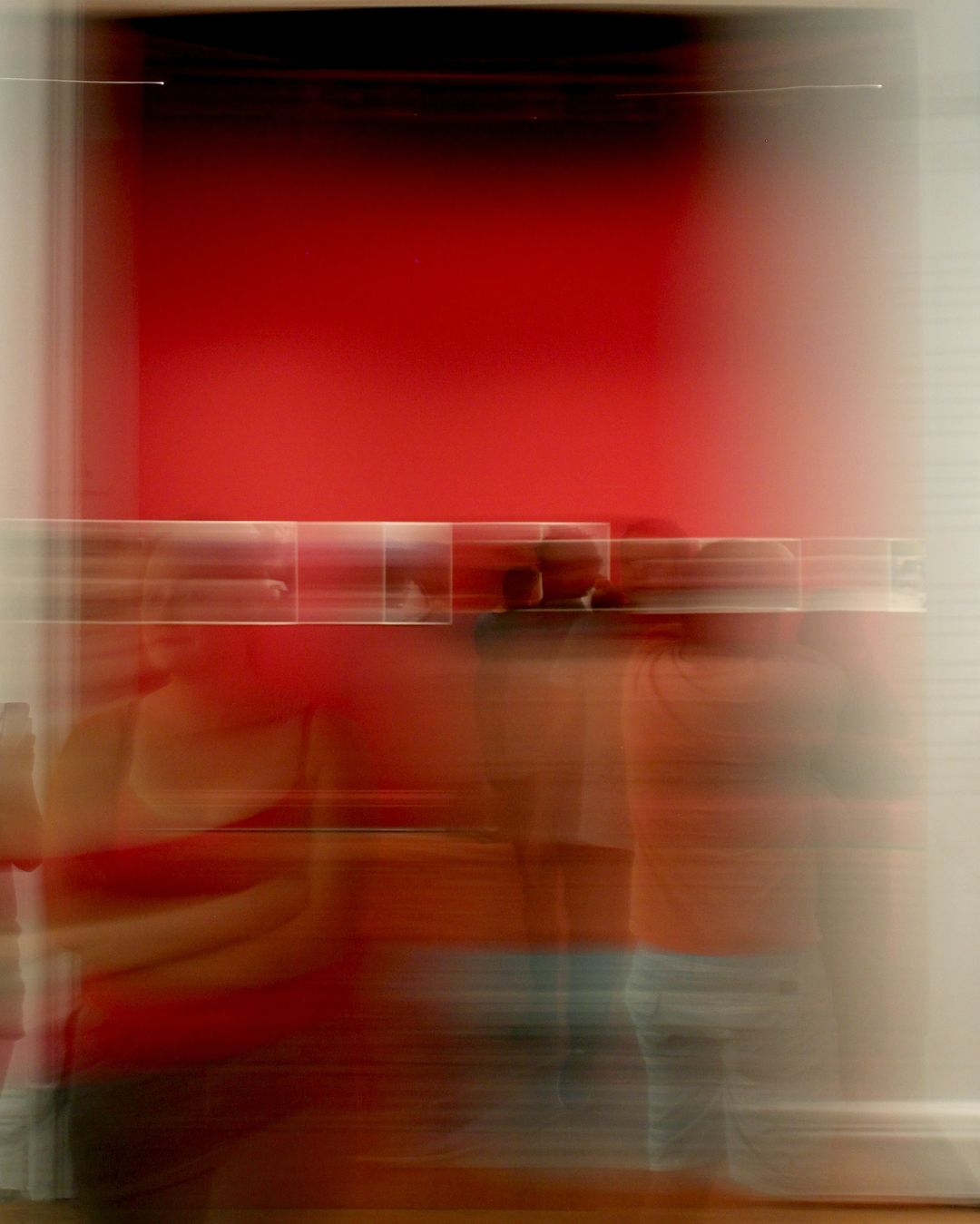FIBONACCI

(P49) FIBONACCI SEQUENCE AND THE GOLDEN RATIO
In the Fibonacci sequence, each number in the sequence is the sum of the two preceding numbers and continues infinitely. 0, 1, 1, 2, 3, 5, 8, 13, 21, 34, 55, 89, 144… Fibonacci numbers are considered to be the numbering system of nature, a way of measuring Divinity. As the sequence progresses, this ratio gets closer and closer to a famous irrational number called the “golden ratio”: 1.6180339887, named as such by the Greek mathematician Martin Ohm (1792-1872) in 1835.
This ratio has been frequently observed in dimensional proportions in numerous fields – in architecture, at the Pyramids of Giza and the Parthenon, in the constructions of Le Corbusier and Mies van der Rohe, in the works of artists Da Vinci, Albrecht Dürer, Juan Gris, Mondrian, and Dalí, in rhythmic durations and height ratios in the works of composers Bèla Bartók, Debussy, Stravinsky, Manzoni, Beethoven.
The same principles apply in rock music. The song “Firth of Fifth” by Deep Purple contains solos that follow the golden ratio, and the song “Lateralus” by Tool has a structure based on the Fibonacci sequence.
In jazz, John Coltrane, Steve Coleman, Mystic Brew, or Ronnie Foster in classic soul-jazz from the 70s, composed pieces with asymmetric structures, in the manner of Fibonacci: “a short chord followed by a long chord, three beats plus five beats, totaling eight beats. It’s a standard four-four time with an additional characteristic – if you step to the rhythm, you hear a chord when you take the first step, then another chord when your knee is lifted between the second and third step.” (Strength in numbers: How Fibonacci taught us how to swing – Vijay Iyer)
Because Western cultures do not really study rhythm in depth, there is no nomenclature for looking at and analyzing rhythms. The only language people have is the language of music notation, which is very limited, and it’s just how things look on “paper”. […] That’s not good. Because rhythm is movement, and it needs to be studied as movement, not as notation. – Steve Coleman



